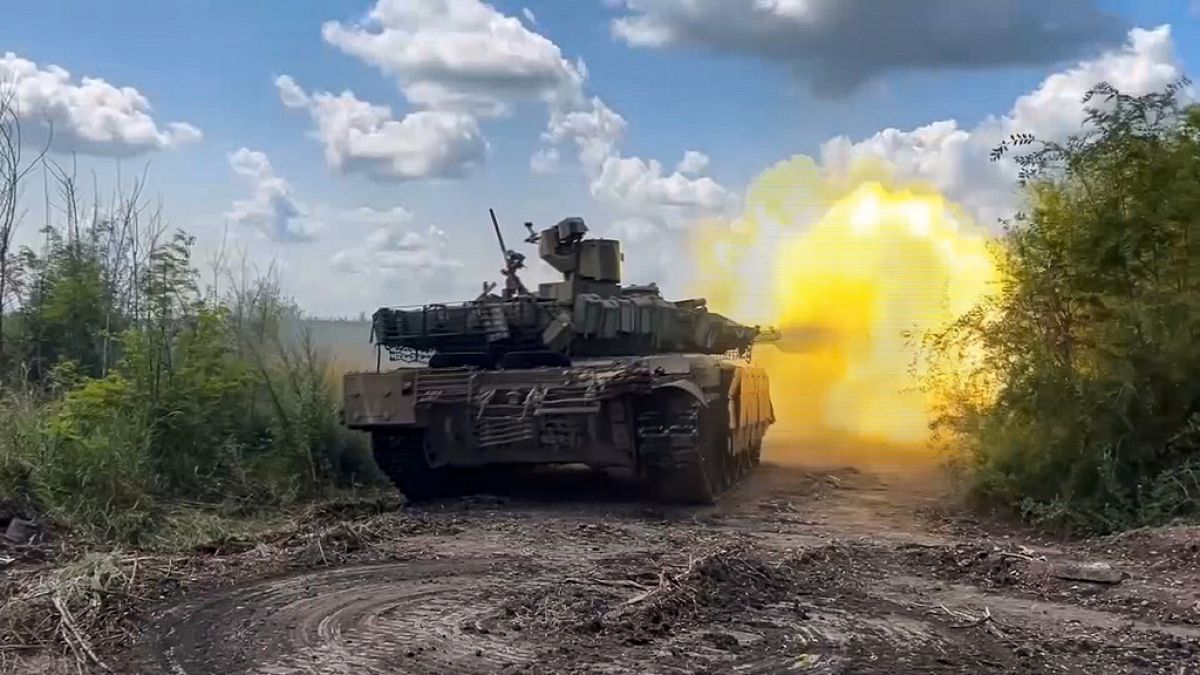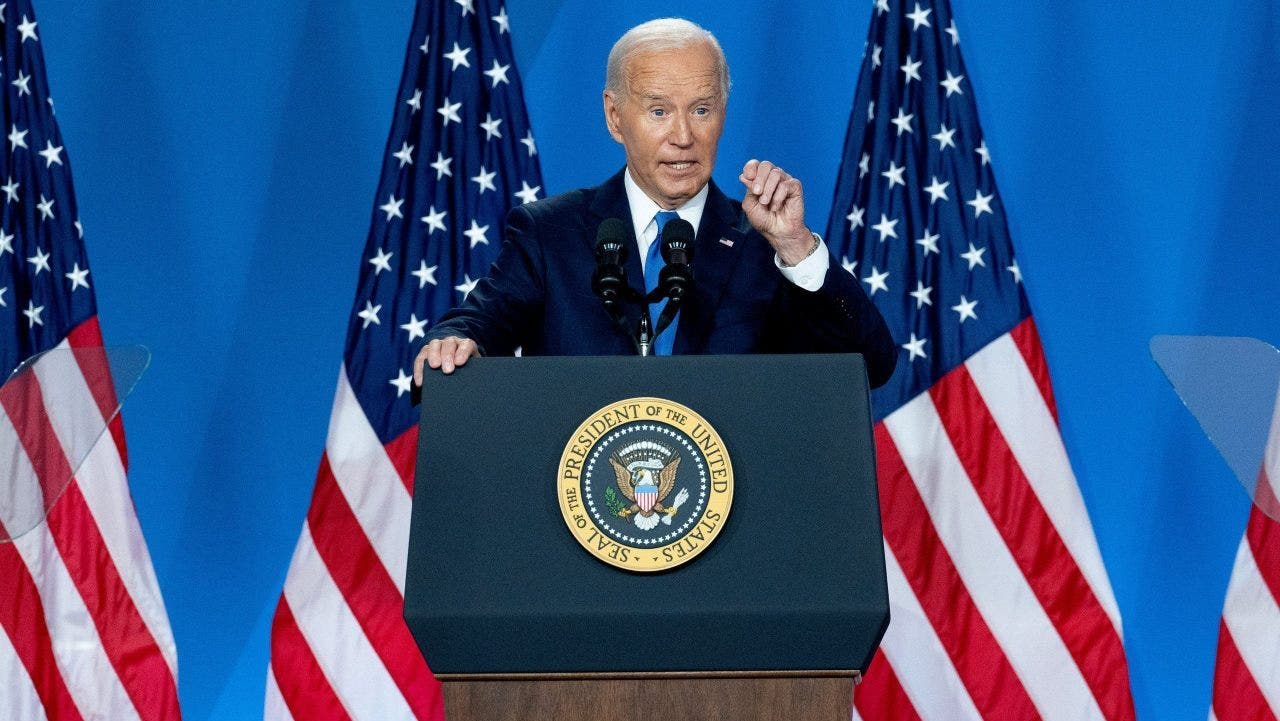North Dakota
Family members remember highly-decorated Elton Ringsak, WWII hero from Grafton, N.D.

GRAND FORKS – Like so many who returned from serving in the U.S. military, Elton Woodrow Ringsak never spoke about his service or the numerous medals he received, family members say.
“Everything I’ve learned about that, I learned from other people – and history books,” said his son, Elton “Mick” Ringsak of Butte, Montana.
The Ringsak family, and countless others in the region, will no doubt pause on
Memorial Day, Monday, May 29
, to remember those who committed years of their lives – or sacrificed their lives – to defend our nation’s principles and values.
Ringsak, a highly decorated WWII hero from Grafton, North Dakota, was wounded five times in two years while serving with the U.S. Army in Europe and North Africa. A display commemorating his service was ensconced in the former UND Memorial Union, which was razed a few years ago to make way for construction of the new Union on the same site. The display, titled “The Price of Freedom,” was not reinstated in the new facility, UND officials told the family, because the university intended to create a memorial installation that was more inclusive of all veterans associated with UND.
Many remember the display, especially for the war-worn, green helmet with a hole, evidence of enemy shrapnel, that recalls the Battle of Monte Porchia in 1944 that ended Ringsak’s Army career.
“I think that’s how he got it; he stood up and urged his soldiers on,” said grandson Beau Bateman of rural Grand Forks.
Contributed
Ringsak is the most decorated North Dakota military veteran, Bateman said. He received the Distinguished Service Cross, five Purple Hearts, and numerous other honors, including the Silver Medal, the Bronze Star, the Presidential Citation, the White Legion of Honor, the French Croix de Guerre with Leaf Cluster, and the Italian Military Valor Cross.
At the Veterans Memorial Museum in Branson, Missouri, a sculpture of life-size bronze figures, lined up two abreast in a squadron on the move, includes one man from each state. In that 15-ton artwork, Ringsak represents North Dakota, Bateman said.
An image of Ringsak is also etched into the Wall of Honor at Veterans Memorial Park in Grand Forks. The full-length image shows him standing in military uniform, wearing jodhpurs.
Lasting effects of injuries
Shrapnel from enemy fire – as evidenced by that green helmet – injured the temporal lobe in the left side of his brain. The injury temporarily paralyzed him, said Mick, the fourth of Elton and Ruth Ringsak’s five children. “He could only blink his eyes.”
Doctors removed bone fragments from his brain, but they were not optimistic about his survival. They did not expect him to live more than five or six months, Mick said. At one point, when nurses discovered that he had crawled out of bed, rehabilitation efforts began.
While hospitalized, Ringsak overheard doctors talking about amputating some of his fingers — one had already been shot off in combat, Bateman said.
“He convinced them that they shouldn’t amputate because he was a piano-player. He was not. They didn’t amputate; they thought that he wouldn’t live anyway.”

Eric Hylden/Grand Forks Herald
Ringsak defied the doctors’ grim prognosis and returned to North Dakota to lead a civilian life dedicated, again, to serving others, Bateman said.
As a result of his injury, throughout his life, he coped with Jacksonian seizures, which, if they advanced beyond his shoulder, he was stricken with grand mal seizure, Mick said.
Such seizures could be triggered if he got riled up, and he worked to maintain a sense of calm, Bateman said. “His self-control was always equal to whatever situation came up.”
Because of the brain injury, he had to learn to write with his left hand, instead of his right, Mick said.
In the 1940s, the era that brought WWII, the commitment to service was something that “you had to do,” Bateman said. After enlisting in the U.S. Army, Ringsak left a wife and children “who didn’t know if they’d see him again. And he came back half the human he was when he left – but he never felt bad about himself; there was no ‘woe is me.’ ”
Mick said his grandfather “never ever talked to me about the war.” Instead, he returned from the military to recover, raise his family, and build a life of service to others.
At the dinner table each evening, “he’d ask each of us, what did you do in school today,” Mick remembered. “He’d say something like, ‘If you did something to make the world better today than it was yesterday, you’ve earned your keep.’ ”
Very active in the school board, VFW, American Legion and other groups, Ringsak taught by example the importance of getting involved in the community.
“He had a strong sense of community and country,” Mick said. “We’ve lost that today.”
Ringsak, who had earned a bachelor’s degree and was involved in the ROTC program at UND before WWII began, returned to his family in Grafton after the war. Because of the effects of his injuries, he was permitted to study for a law license under the mentorship of the Walsh County state’s attorney. He was the last North Dakota to be granted that accommodation, Mick said.
Ringsak, who practiced law for 30 years, served as Walsh County state’s attorney from 1949 to 1956. He served in the North Dakota Legislature for 17 years, from 1957 to 1974.
His ability to remain calm probably contributed to his successful legislative career, Bateman said. “In politics, that was necessary to reach a compromise. He was diplomatic and bipartisan. He was so tactful; he could say things without offending people. We need more of that.”
While serving in the North Dakota Senate, Ringsak created legislation to provide for dedicated handicapped parking spots throughout the state. That legislation was the first of its kind in the country, Mick said. “The most compelling irony about that is, he never ever used a handicapped space.”
In 1974, Elton Ringsak Sr. was awarded the President’s Trophy as “Handicapped Person of the Year” by President Gerald Ford.
Ringsak, who died May 17, 1982, at age 66, is buried in Arlington National Cemetery in Washington, D.C., Bateman said. Ruth Ringsak died in 1988 at age 70.

Photo by John R. Hartman
“He was a very kind guy, a humble guy,” Bateman said of his grandfather, “always kind and always upbeat. He was a gentleman in the finest sense of the word.”
His legacy – and what his family and others will remember him for – is “service, without question,” Bateman said.
Men like his grandfather and others “truly were the ‘greatest generation,’ ” he said.
Distinguished Service Cross
The Distinguished Service Cross, the nation’s second highest award for military valor, behind only the Medal of Honor, was awarded to Lt. Col. Elton Woodrow Ringsak “for extraordinary heroism in connection with military operations against an armed enemy while Commanding the 2nd Battalion, 6th Armored Infantry Regiment,” the award reads.
“Shortly after midnight, 25 March 1943, Lieutenant Colonel Ringsak led his battalion in an assault on a German position on Dj Naemia, which was defended in depth by well dug-in concrete pill boxes behind fields of personnel mines, the approaches to which were covered from every possible angle with heavy machine gun and 99-mm fire. Throughout the entire attack Lieutenant Colonel Ringsak moved among his companies through lines of heavy enemy machine gun fixed fire, giving orders as to the enemy position, reorganizing his companies for further effort.
“His coolness under fire, his superior knowledge and outstanding ability as a leader instilled confidence in his men and was a constant inspiration to them. The action of Lieutenant Colonel Ringsak showed utter fearlessness and determined courage, and, as an example of great leadership, reflects the finest traditions of the Army of the United States.”
Ringsak also received a Bronze Oak Leaf Cluster, in lieu of a Second Award of the Distinguished Service Cross, for extraordinary heroism in a January 4, 1944, battle near Mount Porchia, Italy.
“When his battalion was pinned down as a result of accurate enemy fire, he personally visited the units of his command, inspiring the officers and leaders, reorganizing the battalion, and directing their operation to a successful conclusion. Painfully wounded, he refused to be evacuated and conducted the reorganization of the battalion until the objective was reached.”
In this battle, Ringsak was “gravely wounded” and evacuated, the award states. “By his gallant leadership and heroic disregard for danger, Colonel Ringsak was a source of inspiration to the officers and men of his battalion and his personal conduct of the operations assured the success of the attack. (His) intrepid leadership, personal bravery and zealous devotion to duty exemplify the highest traditions of the military forces of the United States and reflect great credit upon himself, his unit, and the United States Army.”

North Dakota
Color of Hockey: Rangers prospect Emery 'comfortable' heading to North Dakota | NHL.com

Murphy played quarterback for North Dakota from 1960-62 and was its coach from 1978-79. He left a lasting impression on Eric Emery, especially after Cal Fullerton went 12-0 in 1984. Murphy died Oct. 29, 2011.
“I guess I kind of transported into EJ, the sense of respect I have for Gene Murphy and what he did for us at Cal Fullerton,” said the elder Emery, who went on to become a linebacker for the BC Lions, Calgary Stampeders and Ottawa Rough Riders of the Canadian Football League from 1985-87.
“He brought us together and he actually told us that we were going to be champions because he saw the capability in us. I just had to have him (EJ) go look at North Dakota because Gene came from there and a lot of his coaches that he brought with him came from there and they were such good guys. So I figured North Dakota must have something going on.”
There’s also a North Dakota connection between the younger Emery and NTDP coach Nick Fohr, who was born and raised in Grand Forks and regularly attended UND games with his father Roger, who was an off-ice official right up until when he died of cancer in January 2023.
“Oh yeah, we talked about it, for sure,” Fohr said. “Pretty cool place for me and it’s pretty cool to have somebody like EJ interested in that place.
“When people think of an EJ Emery, a Black kid that that’s looking to play hockey, rarely are they going to place him in North Dakota, right? We had some really good conversations about the city, the town and what it’s like. From talking to EJ and his family, they (UND) did a really, really, really good job in the recruiting process in making him feel comfortable, letting him see what it’s like and meeting some football players and other people. It just felt like home to him is how I took it.”
North Dakota hockey coach Brad Berry said Emery had been on the team’s radar since he played for Yale Hockey Academy in Abbotsford, British Columbia, in 2021-22.
“When we got to the recruiting process, he got to know us, we got to know him and it felt comfortable,” Berry said. “When we recruit players, we have a criteria of what we want in a player: It doesn’t matter where you come from or who you are. It matters what you are as a person, and he checked every box that we had.”
Emery (6-foot-3, 183 pounds) is UND’s first Black player since Akil Adams, a defenseman who appeared in 18 games from 1992-94.
North Dakota has had diverse rosters since. Washington Capitals forward T.J. Oshie, a United States-born player who is Indigenous, played there from 2005-08. Center Jordan Kawaguchi, a Canada-born player of Japanese ancestry, played for UND from 2017-21 and was team captain in his final season.
Emery’s selection by the Rangers and commitment to North Dakota delighted Adams, who played in the minor leagues and Germany after he left the university.
“I’m still a North Dakota guy through and through,” said Adams, who lives in Detroit. “He’s definitely in the right place and I’m happy to see that there’s actually somebody else there. I just think it probably speaks volumes about the kind of player he is.”
North Dakota
Huskers add top recruit in North Dakota to 2025 class

LINCOLN, Neb. (KLKN) – Matt Rhule and the Nebraska football staff got commitment No. 17 in the 2025 class on Sunday, adding four-star defensive lineman Kade Pietrzak.
The highly sought-after recruit from West Fargo, North Dakota, is the No. 1 recruit in his state and chose Nebraska over Oklahoma, Kansas State and Wisconsin.
Pietrzak checks in at 6-foot-5, 240 pounds and has been on Rhule’s radar since he was hired at Nebraska.
He will join two other defensive linemen in the class of 2025: Omaha North’s Tyson Terry and Malcolm Simpson from Texas.
Pietrzak is the second-highest rated recruit for Nebraska in this year’s class so far behind Simpson.
COMMITED‼️@HuskerFootball @CoachMattRhule @Coach_Knighton @HuskerCoachTW
#GBR pic.twitter.com/SAXF1FOQ2J— Kade Pietrzak (@KadePietrzak) July 21, 2024
North Dakota
North Dakota Superintendent Helping Schools Develop AI Guidelines

North Dakota School Superintendent Kirsten Baesler announced new state guidance on artificial intelligence (AI) designed to assist local schools in developing their own AI policies and to help teachers and administrators work more efficiently.
A group of educators from North Dakota schools, the NDDPI, the Department of Career and Technical Education, and state information technology agencies created this guidance, which is available on the Department of Public Instruction’s website.
Baesler emphasized that implementing AI, like any instructional tool, requires careful planning and alignment with educational priorities, goals, and values.
She stressed that humans should always control AI usage and review its output for errors, following a Human-Technology-Human process. “We must emphasize keeping the main thing the main thing, and that is to prepare our young learners for their next challenges and goals,” Baesler said.
Steve Snow and Kelsie Seiler from the NDDPI Office of School Approval and Opportunity highlighted that the guidance was drawn from various state education agencies and technology websites, such as Code.org and TeachAI.org, with the process taking about eight months.
“We had a team that looked at guidance from other states, and we pulled pieces from different places and actually built guidance tailored for North Dakota students,” Snow said.
Seiler explained that AI excels at data analysis, predictive analytics, and automating repetitive tasks but lacks emotional intelligence, interdisciplinary research, and problem-solving abilities.
Snow added that AI can help teachers design lesson plans aligned with North Dakota’s academic content standards quickly and adjust them for students who need more support. AI can also simplify the development of personalized learning plans for students.
“You have so many resources (teachers) can use that are going to make your life so much easier,” Snow said. “I want the teachers, administration, and staff to get comfortable with using (AI), so they’re a little more comfortable when they talk to kids about it.”
Seiler noted that the NDDPI guidance is not a “how-to” manual for using AI but offers general suggestions on developing local policies to leverage AI effectively.
“Our guidance is meant to provide some tools to the school administration and say, ‘Here are some things to think about when you implement your own AI guidance,’” Snow said.
“For instance, do you have the infrastructure to support (AI)? Do you have a professional development plan so your teachers can understand it? Do you have governance in place that says what AI can and can’t be used for?”
8 Everyday Foods That Are Legal in Montana, Forbidden Elsewhere
These foods are easy to find on store shelves wherever you buy your groceries in Montana. However in other states they’re banned from the shelves!
Gallery Credit: Michelle Heart
Big List Of The Best French Fries In Montana
Gallery Credit: mwolfe
-

 Politics1 week ago
Politics1 week agoTwo key states to see massive GOP voter registration operation
-

 World1 week ago
World1 week agoJapan, Germany agree to boost security cooperation in Pacific
-

 Politics1 week ago
Politics1 week agoBiden says 'anyway' at least 9 times while trailing off in press conference
-

 News1 week ago
News1 week agoWhy the next president's judicial appointments will impact climate action
-

 World1 week ago
World1 week agoMore than 60 people missing after two buses swept into river in Nepal
-

 News5 days ago
News5 days agoIn Milwaukee, Black Voters Struggle to Find a Home With Either Party
-

 World1 week ago
World1 week agoUkraine: shelling in Kherson leaves at least two people dead
-

 Politics1 week ago
Politics1 week agoRep. James Clyburn claims Biden is slowing physically but 'mentally' fit and 'one of the best minds' he's met














